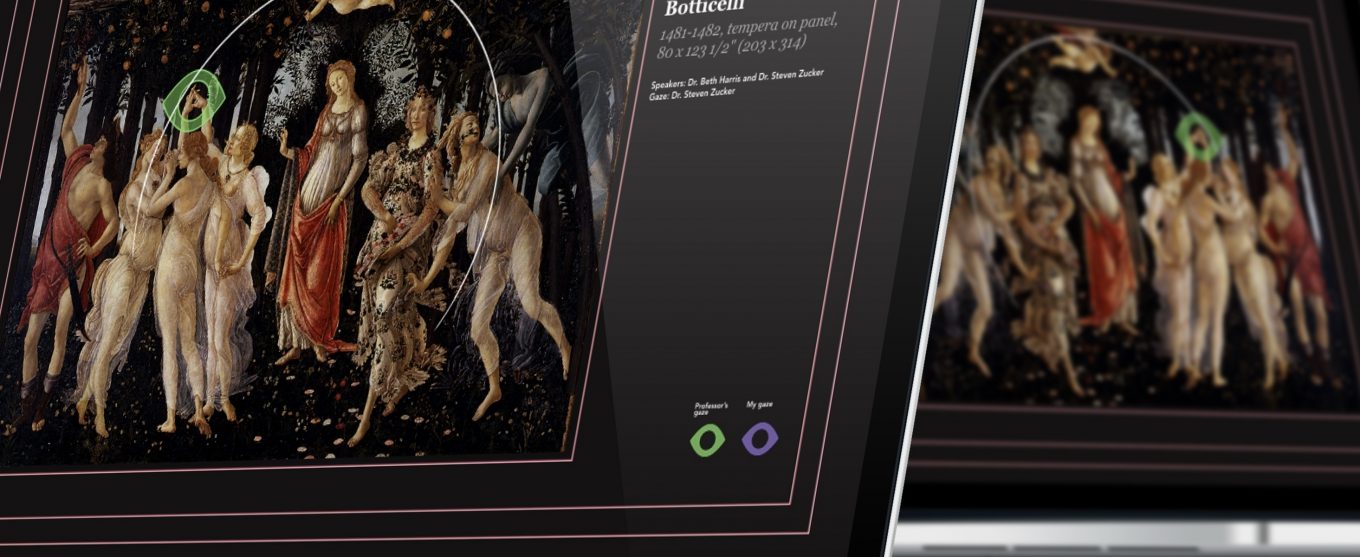Environmental
Museum Digital Interface – The University of Oklahoma

This interface has been designed as an interactive artifact for a museum. On this interactive piece, environmental issues are looked at on lenses from the atomic scale to the universe.
Environmental maps out environmental issues on a circular presentation representing both the spatial dimension and the possible cause-and-effect relationships between specific events. The interface provides information regarding specific events gathered from research papers, scientific interviews and any other users who can share content or ideas that would diminish the impact of these issues.

Gaze Studies
Design Research – North Carolina State University

Eye tracking and gaze navigation have larger implications than simply the visual interaction with our screens, and expand to many fields of research and expertise. My research on the literature regarding eye tracking has revealed the potential for enhancing people’s interaction with the world, where their gaze can give them a new ease of access and navigation.
For the first phase of this project, I developed a set of studies using wireframing and storyboarding to explore the potential of such technology in our daily usage. For each of these studies, I used a system where I placed both infancy and maturity alongside each other, so that we can identify the changes and how the technology could impact our daily interactions.
For my first study, I focused on the use of eye tracking and gaze navigation for the specialization of research content results. What if the gaze allowed you to reorganize as you view the hierarchy of your content based on your own interests and preferences? I liked the idea of an interface being able to reorganize itself based on your gaze behaviors, your emotional response to content, and your research prompts to enhance and maximize the time we usually spend on the research of content. This intersection exists at the line between machine learning and eye tracking where the separation is very thin and where both fields could complement each other.

For my second study, I considered the use of eye tracking and gaze navigation in the context of physical environments such as museums. I investigated the idea of how a user’s gaze could be used as a personal docent while instantly providing the user with information regarding the painting or the symbols on a painting. Furthermore, the user’s gaze could become a magnifier allowing him or her to see the complex details in a painting. I considered how a multi-gaze detection interface would constantly reframe the content of digital screens to allow users to have their unique content presented to them in ideal conditions. I also considered the use of gaze navigation in a changing room where the client could interact with the mirror. Finally, I considered how gaze-controlled interfaces would be beneficial in places where hygiene is critical such as hospitals.

For my last study, I researched the use of eye tracking and gaze navigation in an online learning environment where both the data of the user’s gaze behavior and the gaze itself could serve in enhancing the student-learning experience. Data from eye tracking could provide the student with feedback based on his or her efficiency and attention while studying the content. Finally, I considered how being able to see the professor’s gaze on the interface could help the student to maintain his or her attention and keep track of the course.

For the second phase and the development of my system, I decided to represent the key moments of the journey of a student going through an online interactive art history class. The student can enable the professor’s gaze while accessing new layers of content, and receive immediate and personalized feedback if focus is lost or while finishing a course.

